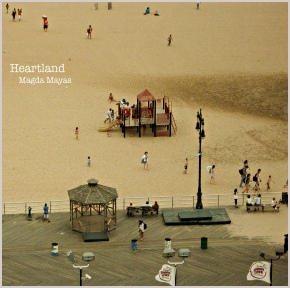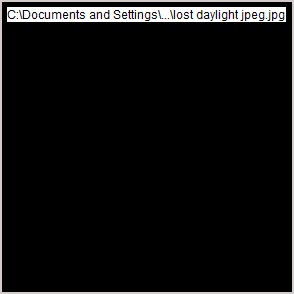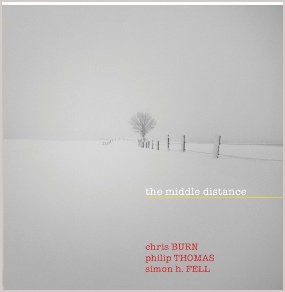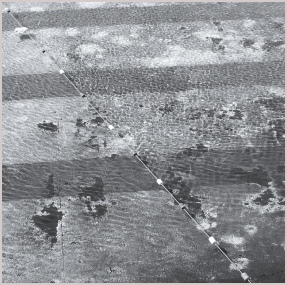Another Timbre TimHarrisonbre
Review of the piano series of discs in The Wire, February 2010 by Philip Clark
“Lost Daylight - John Cage / Terry Jennings / John Tilbury / Sebastian Lexer at10
The Middle Distance - Chris Burn / Simon H Fell / Philip Thomas at24
Turned Moment, weighting - Stephen Cornford / Samuel Rodgers at-b07
Heartland - Magda Mayas at25
Four new discs pushing against the limitations of the piano's hardware rewire the instrument's evolution.
By Philip Clark.
When did the evolution of music begin to outstrip the usefulness of the piano? Was it when Theolonius Monk, Andrew Hill and Cecil Taylor began to play so much piano that cherished ideals of 'good' pianism buckled under their physical resonance and emotional muscle? Or when John Cage wrenched screws, bolts and nails in between piano strings and, in an instant, two centuries of pianistic tradition went puff and, from the smoke, emerged a percussion orchestra? Or when Beethoven's 1818 Hammerklavier sonata issued so many revolutionary technical challenges that, after centuries of composers cowering in the front of the instrument, someone finally made it dance to a different tune?
Or perhaps – in the parallel world documented on these four discs, released as a series aiming to “explore and expand the piano” - we haven't reached that saturation point yet. But the truth is, however objective your perspective, the piano is to creative, progressive music making what the Commodore Vic-20 is to the iPhone: woefully outmoded hardware. From a list that could include all, or even one, of these à la mode preoccupations: microtonality (a no go), the timbral cleanliness of electronics (the piano is hit like a percussion instrument – clean it ain't), fingertip forensic exploration of the inner fabric of sound in the image of John Butcher, Oren Marshall and Peter Evans (the piano doesn't let musicians fall inside sound in the same way), the piano is, at best, a blunt tool for their execution.
Which paradoxically can prove a fertile starting point for something new to happen in sound if, as the musicians involved here do, you mould those limitations into a dialectic between the piano's evolutionary history and now. Sound artist Stephen Cornford stumbled across pianist Samuel Rodgers photocopying pages of Morton Feldman's Triadic Memories (a good omen) when both were students at Dartington College of Arts, and Turned Moment, weighting features Cornford's realtime feedback treatments of Rodgers's touchy-feely, incisive playing on piano and miscellaneous objects.
Impressively, this taut 45 minute disc was culled – as detailed on an interview on the Another Timbre website – from a weekend-long recording session of their improvisations. Some of that material has, apparently, been filtered off for another project; what remains here, however, spotlights an intriguing tension between the seamless, relentless hum of the electronics, which transcends time, and the unstable rattling and evolving mantras of the piano Rodgers still occupying countable time. There's a bewitchingly beautiful moment during the second track as all the sounds coalesce, then hover, around an open octave – a gesture not normally part of the improvised music lexicon – which then broadens its harmonic reach to inhabit some unexpectedly conventional triad relationships which the overlaid feedback peels apart, as though sound has been illuminated with an x-ray.
The surface of Heartland, by Berlin based improvising pianist Magda Mayas, seems at first to zone into that same textural ballpark – the inside of the piano, it transpires, has as many recognisable mannerisms as the keyboard – but the potency of her creative nous soon asserts itself. Mayas reminds us that the piano has physical dimensions, as she wires up its insides, elevating its inner mechanisms to the status of the keyboard, and deploys her instrument's wooden frame as an added sound source. Put together, it's an exhilarating sonic brew: after her introductory drones disperse, the music flies with cartoon-like velocity. Metrically intricate, brittle patterns ricochet against the instrument casing like it's a pinball machine, strings twanging together like the expressive tuning of a blues guitarist. Towards the finish, keyboard harmonies get more empathically struck – Mayas began with the future and has worked back to the instrument we already know.
The Middle Distance – featuring Simon H Fell (bass), and pianists Chris Burn and Philip Thomas – draws on a bountiful reservoir of experimental histories. Thomas is known for his performances of Cage and 'complexity' composers like Michael Finnissy; in 1993 Burn issued a disc of piano music by pioneering American composer Henry Cowell, although his interest in composed means has been overshadowed by his reputation as an improvisor. Thomas, playing prepared piano, remains sonically distinst from Burn, but the music manages a noticeably unified soundworld. Fell leaves conventional bass rhetoric far behind as the musicians consciously match up their timbres; at 2'55” on track four, their extended techniques flow into a microtonal patois that trashes instrumental allegiance.
These three records give inspiring snapshots of musicians reaching into the zeitgeist, but Lost Daylight – John Tilbury performing Terry Jennings and John Cage – is a record we're going to be talking about for years. The delicately transforming textures of Winter Sun, the most often cited work by Jennings, an undeservedly overlooked American proto-minimalist, holds gestural clutter in disdain, allowing the piano to intone along its natural grain. Cage's Electronic Music for Piano is not a composition as such, rather a set of openended instructions about a possible treatment, governed by random procedures developed from an astronomical atlas, of Cage's earlier Music for Piano, using feedback, amplifiers and loudspeakers.
Tilbury, with Sebastian Lexer on electronics, then doubles up on those procedures by subjecting the raw recording itselfto a further randomised edit. Don't make my mistake and yank up the volumeto appreciate softs that are softer than soft; the recording levels are awesomely (uniquely?) wide and what came next dealt me an ear-splitting shock. The recording melts Tilbury's playing towards silence in an authentic expression of the Cageian spirit, but then something truly remarkable – near the end, the silence captured during the performance is intercut with the absolute silence of blank disc space. The recording takes you completely outside the performance space, and into different colours of silence. Feldman once said Cage was the first composer to explore the possibility that music could be an 'art form' rather than a 'music form'. No Cage disc rises to that challenge more boldly, and with such revolutionary results.”



